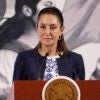Although Japan is now best remembered for two decades of economic stagnancy, its post-war development plan can still serve as a model for emerging countries and economies recovering from crisis.
This notion was on display in October, when, for the first time since 1964, Tokyo hosted the annual meetings of the International Monetary Fund (IMF) and the World Bank.
The Daily Signal depends on the support of readers like you. Donate now
In her opening speech, IMF Managing Director Christine Lagarde affirmed that Japan’s former Prime Minister Hayato Ikeda’s vision was still relevant. Ikeda had observed in 1964 that “the vital challenge which we all face, whether domestically or internationally, is to promote stable economic growth and reduce the disparity between the rich and the poor.”
Ikeda implemented market-friendly policies and ignited Japan’s rapid economic growth.
Japan’s economic “miracle” is often perceived as the result of heavy government intervention, directed industrial policy, and mercantilism. Such a view is somewhat misleading. Instead, Japan’s initial post-war boom was due to pursuing balanced budgets and market liberalization policies during the1950s and early 1960s.
As Japanese finance minister in 1949, Ikeda adopted a guideline proposed by Detroit Bank President Joseph Dodge. Ikeda’s policies balanced the budget, brought down inflation, fostered individual savings, and slashed export subsidies.
Although Dodge’s model was blamed for the subsequent economic slowdown, it left an important legacy by mobilizing the Japanese private sector to concentrate capital more effectively. Fiscal responsibility ultimately paid for itself many times over.
When Ikeda became prime minister in 1960, he and pro-market senior adviser Osamu Shimomura implemented policies to further liberalize the economy. Sadly, Ikeda became ill and had to resign in 1964. Subsequent administrations tried to slowly rein in Japan’s economy in the name of stable growth. Yet Japan continued to enjoy economic success throughout the 1970s due primarily to corporate-level innovation built on the foundation of Ikeda’s pro-market policies.
There are two lessons from Japan’s post-war recovery:
(1) For developed countries, many of which are now struggling, the government is not the right tool to encourage economic growth. The private sector most effectively allocates resources.
(2) For emerging countries, as Japan was in 1949, free markets, free trade, and free choice are the best ways to expand the economy.
Japan’s experience in emphasizing the private sector in the 1950s and 1960s is echoed in The Heritage Foundation’s Index of Economic Freedom and the World Bank’s Doing Business 2013. They illustrate the positive correlations between economic growth, economic freedom, and creation of a business-friendly environment. Japan’s post-war experience can still give some lessons to the world.






























